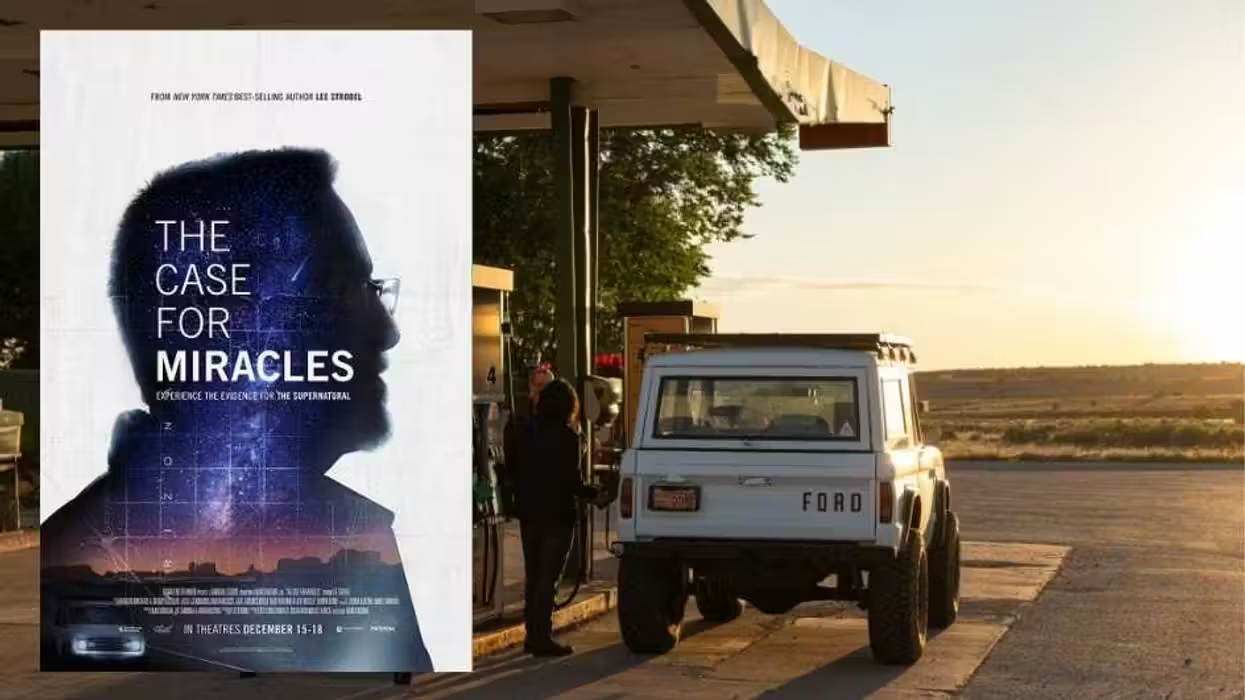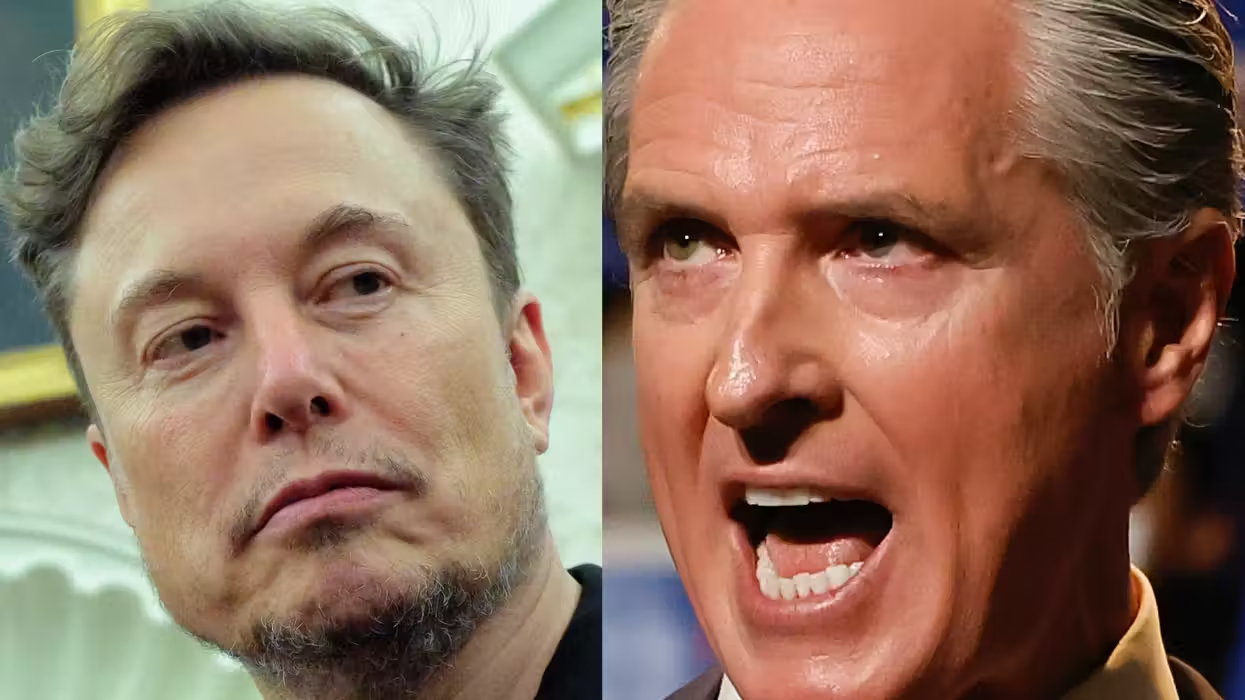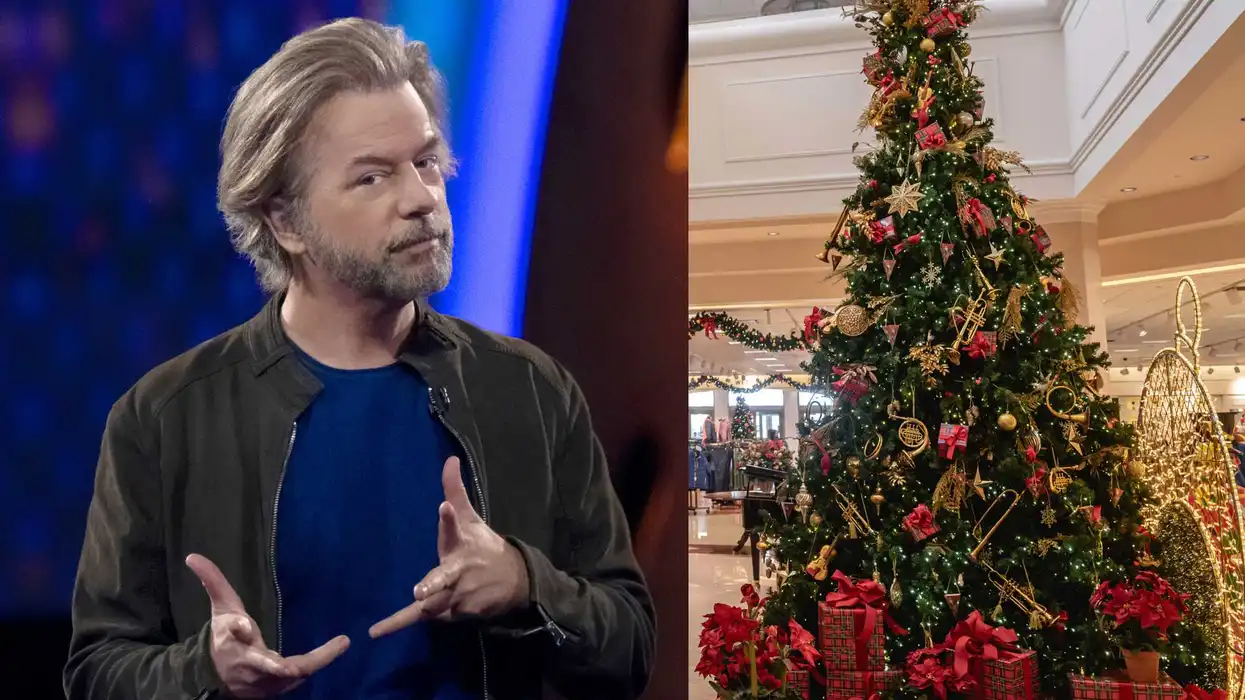
© 2025 Blaze Media LLC. All rights reserved.
Since Shalit's 2011 release, the drama of the exchange and the debate surrounding it has gradually declined, particularly in the public sphere.
Tuesday marks seven years since Israeli solider Gilad Shalit, then 19, was captured near Gaza after his tank was ambushed by members of the Palestinian Islamist organization Hamas. Released back to a joyful Israel in October 2011 following five years in captivity and international efforts calling for his release, Shalit now writes as a sports columnist for an Israeli newspaper. As at the time of Shalit's release, contention still remains with some regarding the prisoner exchange deal which brought him home through the controversial release of 1027 Palestinian prisoners.
At the time of his abduction, Shalit was a corporal in an armored corps unit as part of his mandatory service to the Israel Defense Forces (IDF), a requirement of Israeli citizens at age eighteen. The two other soldiers patrolling with Shalit near the Gaza border on June 25, 2006 were killed during the attack, and the wounded 19-year-old was taken by Hamas to southern Gaza where he would be held for the next five years. During that time Hamas confirmed that Shalit was alive and in their possession after releasing three letters, an audio tape, and a video featuring Shalit in 2009. Hamas denied Shalit visits from the International Committee of the Red Cross or contact with his family, in violation of international humanitarian law. During the first televised interview after his release, Shalit said in October 2012 of his time in capitivity, "I would play all sorts of games, mostly sports-related. I would form a ball out of a sock or a shirt and throw all kinds of things to the trash bin. I also wrote.” Shalit noted he was careful to hide his writings from his guards, as they were suspicious that Shalit was spying on them.
 Gilad Shalit
Gilad Shalit
During his time in captivity Gilad Shalit became a “celebrity” throughout Israel and the world. Shalit’s parents launched a vocal “Free Gilad Shalit” campaign, setting up a tent in front of the prime minister’s residence in Jerusalem where they sat each day until their son’s release. The Shalits distributed yellow ribbons (which soon became a well known symbol of support for the campaign) and gathered signatures for Shalit’s release. In June 2010 Shalit’s parents organized a twelve-day protest march from their house in northern Israel to Jerusalem, joined by over 10,000 supporters expressing their solidarity with Shalit and his family. Shalit’s parents traveled around the world, particularly in the United States, visiting schools and synagogues to gain the support of religious leaders and government officials to put public pressure on Hamas to release their son.
In October 2011, a prisoner exchange agreement mediated by Egypt was finally reached between Hamas and Israel. The basics of the deal: 1027 Palestinian prisoners were released in exchange for one Israeli soldier. Shalit was transferred from his holding in Gaza, ironically located just a few miles from the border with Israel, to Egypt and then to Israel on October 18, 2011. When it was officially announced that a deal had been reached and Shalit would be returning to Israel in just a few days, celebrations broke out all over the country. In Jerusalem, supporters of the deal danced and sang in the streets throughout the night. Beyond Israel, many international leaders, including influential politicians from the United States and Europe, supported the prisoner exchange. Shalit was declared a disabled veteran by the IDF and immediately underwent medical treatment for his various injuries when he was returned.
New York City Mayor Michael Bloomberg had marched in support with Shalit’s parents during his captivity and strongly supported the prisoner exchange deal. In addition to Bloomberg, French Prime Minister Nicolas Sarkozy was a strong supporter of Shalit, praising Israel’s efforts to return Shalit “because in a democracy we attach importance to one life and every family in Israel knows he can have a Gilad Shalit." During his captivity Shalit was named an honorary citizen of France and met Sarkozy in the presidential palace after his return. Shalit spent the anniversary of his capture last year in New York with Bloomberg.
While many supported the swap, there were also those who thought the release of 1027 Palestinian prisoners was too high a price to pay for the return of one Israeli soldier. Some, like Lea Schijveschuurder, who lost family and friends in terrorist attacks carried out by prisoners, could not rectify the exchange. Schijveschuurder, whose parents and siblings were killed in a 2001 terrorist attack in a Jerusalem’s Sbarro pizza shop, protested the celebration for Shalit’s release as Abdullah Bargouti, the mastermind behind the Sbarro pizzeria bombing, was one of the 1027 terrorists to be released in the swap.
These concerns were formally addressed the night before Shalit’s release when Israel’s Supreme Court unanimously ruled to reject the petitions of four bereaved families against the release of the Palestinian prisoners in the exchange deal. In the decision, the president of Israel’s Supreme Court Dorit Beinisch acknowledged that "Undoubtedly, the government's decision will send many terrorists who will be set free without serving their full sentence” and wrote that it was “one of the most loaded and unnerving debates to come before this court.”
In addition to those opposed to the exchange for personal reasons, many feared that the prisoner swap would incentivize Hamas and other terrorist organizations to capture more Israeli soldiers, knowing that Israel is willing to release thousands of prisoners in return for one soldier. Uzi Landau (then National Infrastructure Minister), one of the three cabinet members who voted against the prisoner exchange, called the deal “a great victory for terrorism.” In fact, on the day of the exchange, Palestinians in Gaza greeted the returning Palestinian prisoners with chants of “We want a new Gilad Shalit!”. Spokesmen from terrorist groups in Gaza formally supported this sentiment. In a public statement the Hamas military spokesman asserted that Shalit “will not be the last soldier kidnapped by Hamas as long as Israel keeps Palestinian prisoners detained.”
Consequently, since Shalit’s capture, and particularly since his release, Israeli soldiers are cautious of this reality and perform “kidnapped soldier” drills during their IDF training. Since Shalit’s capture no Israeli soldiers have been kidnapped, but attempts have been made. According to Israel’s Shin Bet, thirty-three attempted captures of Israeli soldiers by Palestinian terrorist groups have been foiled since the beginning of this year alone. Detractors of the deal can note that Shalit’s abduction was far from the first in Israel’s sixty-five year existence. In 1982 five Israeli soldiers went missing after a battle in Lebanon with Syrian and Palestinian forces. Two of the soldiers were later returned to Israel in a prisoner exchange, but the other three soldiers, Zachary Baumel, Yehuda Katz and Zvi Feldman, remain missing to this day. In 1986, Israeli soldier Ron Arad’s fighter plane was shot down over Lebanon. Arad parachuted to the ground where he was taken captive by members of a Lebanese Shiite militia, and, presumably, remains there today. In 1994 Hamas terrorists dressed as Orthodox Jews kidnapped Nachson Wachsman, and Israeli soldier (and American citizen). Three days later an elite IDF unit carried out a rescue mission but arrived too late. Most recently, several weeks after Shalit’s 2006 abduction, two additional Israeli soldiers, Ehud Golwasser and Eldad Regev, were kidnapped in a Hezbollah raid on Israel’s northern border with Lebanon, spurring the 2006 Lebanon War.
In 2008 a prisoner exchange deal was negotiated between Hezbollah and German intelligence on behalf of Israel. Five Hezbollah members, including Samir Kuntar, Israel’s longest serving prisoner, who carried out a brutal terrorist attack in 1979, and the remains of 199 Lebanese and Palestinian prisoners were released in exchange for the bodies of the two soldiers (it was not known if the Israeli soldiers were dead or alive until they arrived in coffins in Israel).
 Israeli Prime Minister Benjamin Netanyahu, right, welcomes released Israeli soldier Gilad Schalit, as arrives at Tel Nof Air base in southern Israel, Oct. 18, 2011. (GPO/AP Photo)
Israeli Prime Minister Benjamin Netanyahu, right, welcomes released Israeli soldier Gilad Schalit, as arrives at Tel Nof Air base in southern Israel, Oct. 18, 2011. (GPO/AP Photo)
In the two years since Shalit's release, at least fourteen Palestinian prisoners released in the exchange deal have been rearrested and placed back in Israeli jails. In an interview with Israeli newspaper Haaretz the IDF Spokesman’s Office explained that the terms of the Shalit exchange deal included the condition that the released prisoners “not return to prohibited security activities” and that they could be incarcerated again “due to conviction of another offense during the period of parole, or through an administrative committee authorized to examine intelligence information.” Many of these rearrested prisoners immediately resumed terrorist activities upon their releases, just as critics predicted and feared at the time of the exchange. One, Omar Abu Sneina, began recruiting Palestinians to kidnap Israeli soldiers and publishing literature on how best to implement that upon his release. Daoud Hilo was found smuggling weapons into Gaza just one month after his release. Amir Barakat was arrested for planning a terror attack in an Israeli city.
These recent rearrests can be viewed as proof of the validity of the claims of the detractors of the Shalit deal, but can also be viewed as the enhanced efforts of the of the Israeli government to keep its citizens safe despite the less than ideal release of hundreds of terrorists. Since Shalit's 2011 release, the drama of the exchange and the debate surrounding it has gradually declined, particularly in the public sphere. There has been relatively little mention of Shalit or the exchange in the media of late, and almost no attention paid to this seventh anniversary of Shalit's capture. That said, the controversy undoubtedly remains.
Perhaps this unfortunate reality has less to do with internal dispute and more to do with external instability of the Middle East, as Shalit admitted upon his return home, "It will be hard for me to send my children to the army, but in the end the state [of Israel] got me out of there…I have no doubt I will send my children to the army. I hope that by then they won't have to go, but for now it doesn't look like that is on the horizon." The events of the capture, the dispute surrounding the exchange, Shalit’s insights on his experience and the current activities of the released Palestinian prisoners can all lend perspective to Israel and other countries that find themselves in similar situations in the near future.
--
More Contributions From TheBlaze:
Want to leave a tip?
We answer to you. Help keep our content free of advertisers and big tech censorship by leaving a tip today.
Want to join the conversation?
Already a subscriber?
more stories
Sign up for the Blaze newsletter
By signing up, you agree to our Privacy Policy and Terms of Use, and agree to receive content that may sometimes include advertisements. You may opt out at any time.
Related Content
© 2025 Blaze Media LLC. All rights reserved.
Get the stories that matter most delivered directly to your inbox.
By signing up, you agree to our Privacy Policy and Terms of Use, and agree to receive content that may sometimes include advertisements. You may opt out at any time.






